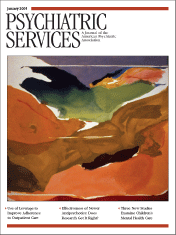Inside Rikers: Stories From the World's Largest Penal Colony
The title of this book is somewhat misleading. Inside Rikers: Stories From the World's Largest Penal Colony is not so much about the brutalities of life inside this vast and sprawling penal facility a la Ted Conover's bestseller, Newjack, which chronicled Conover's year as a correctional officer inside Sing Sing prison. Rather, this compact work of narrative sociology exposes us to the all-too-real and numbing brutality doled out on the streets of the city's "dead zones"—a police term denoting the parts of the city that have extremely high homicide rates—through the stories some of the inmates tell the author, Jennifer Wynn, as students in her jailhouse writing class.
Wynn, a woman of privilege with a background in journalism, first entered Rikers—also known as "the Rock"—to do research for a story about a con man for her newspaper. But, once inside this compelling world, Wynn felt a need to return, because, she says, the men she met defied her stereotypes of criminals, and perhaps also because she knew that whatever she had to offer, it would be eagerly received. She became a teacher in a unique rehabilitation program known as Fresh Start, run by the Osborne Association. The Osborne Association was named for its founder, an early New York prison reformer who lived for a week as a convict in Auburn Prison so that he could know what the inmates' daily lives were like. He did this after accepting the job of warden for that renowned institution.
Wynn provides a brief but fascinating history of the present-day penal colony in the first chapter. We learn that Rikers Island was once a lush farm of 87 acres owned by a Dutch family named Rychen. After the city of New York appropriated the island in 1884 and then built the first jail there in 1932, the island was expanded to 415 acres with landfill to accommodate nine more jails, which now can house up to 17,000 inmates—more than the entire prison systems of at least 35 states. Other statistics are as discouraging as they are staggering: 75 percent of all inmates released from Rikers Island will return within a year; 92 percent of the inmates are black or Hispanic, in a city in which these two groups make up only 49 percent of the population; 25 percent have been treated for a mental disorder; 30 percent were homeless before their incarceration; 90 percent do not have a high school diploma or equivalent; and 75 percent are there for drug-related crimes. It costs $68,000 annually for every prisoner confined on Rikers Island, yet residential drug treatment would cost only $17,000 annually. As striking as these statistics are on their own, Wynn takes these dry facts and conclusions of various criminology studies to a personal level through some potent and sensitively drawn portraits of the inmates who were her students.
Wynn says that she was drawn to Fresh Start because the program boasted a recidivist rate of only about 30 percent. The program achieves this low rate, she says, because it is small (selecting only 25 students from 250 applicants per three-month cycle), is well funded, and continues after the men are released. Inside, there are opportunities for the men to learn some basic job skills in two areas—computers and culinary arts, industries in which positions are plentiful in New York City. When the men are released, counselors use a biopsychosocial model to help ex-inmates set up job interviews, attend substance abuse treatment, receive medical care, and obtain places in training programs.
Seeing her former writing students on the street allowed Wynn to witness their progress over time as they struggled to get their lives on track and "go legit." Wynn's ability to empathically connect with them allowed these hardened men to tell her the intimate and horrific details of their lives before—and, sadly, after—incarceration. Some even invited her home to dinner, and she went. By drawing on these experiences, Wynn constructs powerful and poignant narratives that she uses in each chapter to put flesh on the dry bones of statistics and findings of criminology studies. Sadly, though, the chapter called "Successful Escapes"—about the individuals who managed to get jobs and build straight lives—is the shortest chapter in the book.
Wynn, who later enrolled in an advanced degree program in criminology, uses her erudition to effectively prosecute a case against a system that has bloated itself with minorities and nonviolent offenders as a result of misguided sentencing policies and draconian drug laws. The economic and human drain in the African-American—and, to a lesser extent, Latino—population of this country is all but incalculable. It is also well established that such policies, spawned by the so-called "war on drugs," which emphasize appropriations toward interdiction and punishment, give an exponentially smaller bang for the buck in both fiscal and human terms than tax dollars spent for treatment. However, these observations and conclusions are not new, which raises the question, Why does it continue so?
Mr. Radosta is associate mental health director for prisons at the University of Massachusetts Correctional Health Program in Westborough.



